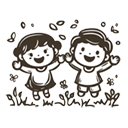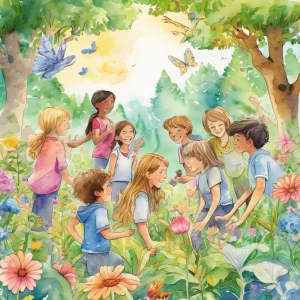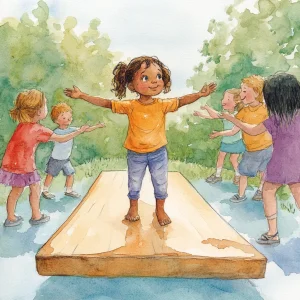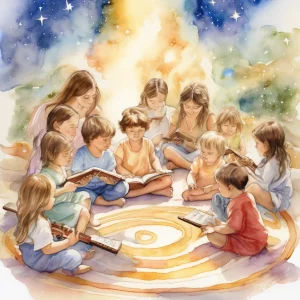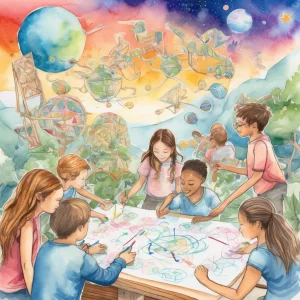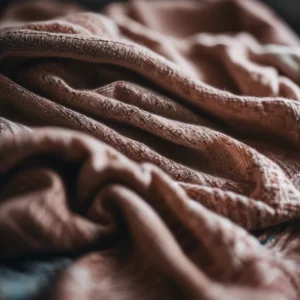Activity
Similar Activities
Magic Garden Tales - Family Story Time
Children’s Age: 5–6 years
Activity Duration: 10 minutes
Join our "Family Story Time - Building Friendship through Reading" activity to help children enhance communication skills, adaptive development, and self-regulation while fostering…
Activity Duration: 10 minutes
Enchanted Forest Math Quest: Nature's Math Adventure
Children’s Age: 12–16 years
Activity Duration: 1 hour
Nature's Math Adventure is an engaging activity designed for children aged 12 to 16 years. It promotes cognitive development, ecological awareness, and healthy habits while incorpo…
Activity Duration: 1 hour
Whispers of Nature: Eco-Puzzle Challenge
Children’s Age: 8–12 years
Activity Duration: 20 minutes
The "Eco-Puzzle Challenge" activity is a fun and educational way to promote empathy, play skills, and ecological awareness in children aged 8 to 12. Children work in small teams to…
Activity Duration: 20 minutes
Imaginative Tales: Storytelling with a Twist
Children’s Age: 3–6 years
Activity Duration: 5 – 15 minutes
"Storytelling with a Twist" is an engaging activity designed for children aged 3 to 6 to boost self-regulation, cognitive development, and play skills. Create a cozy storytelling c…
Activity Duration: 5 – 15 minutes
Dance and Move Name Game: Expressive Play
Children’s Age: 3–4 years
Activity Duration: 5 – 10 minutes
The "Dance and Move Name Game" activity combines play, dance, and language skills for children's development. Set up an open dance space with name tags for each child and upbeat mu…
Activity Duration: 5 – 10 minutes
Balance Beam Adventure: Enhancing Coordination and Focus
Children’s Age: 2–12 years
Activity Duration: 5 minutes
This fun activity called "Balancing Act Fun" is perfect for kids aged 2 to 6. It helps improve coordination, balance, and self-regulation. You'll need a flat surface, a stable boar…
Activity Duration: 5 minutes
Whispers of the Blossoming Earth Journeys
Children’s Age: 11–15 years
Activity Duration: 50 – 55 minutes
Embark on the "Around the World Planting Adventure," a gardening activity designed for children aged 11 to 15. Through planting seeds from different countries, kids will learn abou…
Activity Duration: 50 – 55 minutes
Vibrant Handprint Symphony - The Colorful Handprint Art
Children’s Age: 1.5–2 years
Activity Duration: 5 minutes
Engage your 18 to 24-month-old in the Colorful Handprint Art activity to support their creativity and adaptive skills. With washable non-toxic paint, white paper, and a few simple …
Activity Duration: 5 minutes
Enchanted Musical Storytime Adventure
Children’s Age: 2–2.5 years
Activity Duration: 5 – 15 minutes
Join the "Musical Storytime Adventure" for children aged 24 to 30 months, focusing on self-regulation development. Gather favorite storybooks, musical instruments, a cozy rug, and …
Activity Duration: 5 – 15 minutes
Dancing Around the World: Cultural Adventure Dance
Children’s Age: 2–2.5 years
Activity Duration: 5 – 15 minutes
"Dancing Around the World" is an engaging activity designed to enhance children's coordination, balance, and cultural appreciation through dance. By incorporating music, scarves, a…
Activity Duration: 5 – 15 minutes
Tech Adventure Obstacle Course Expedition
Children’s Age: 11–15 years
Activity Duration: 30 minutes
Engage children in a tech-inspired obstacle course activity to boost academic and language skills, coordination, and communication. Set up a play area with cardboard boxes, tubes, …
Activity Duration: 30 minutes


